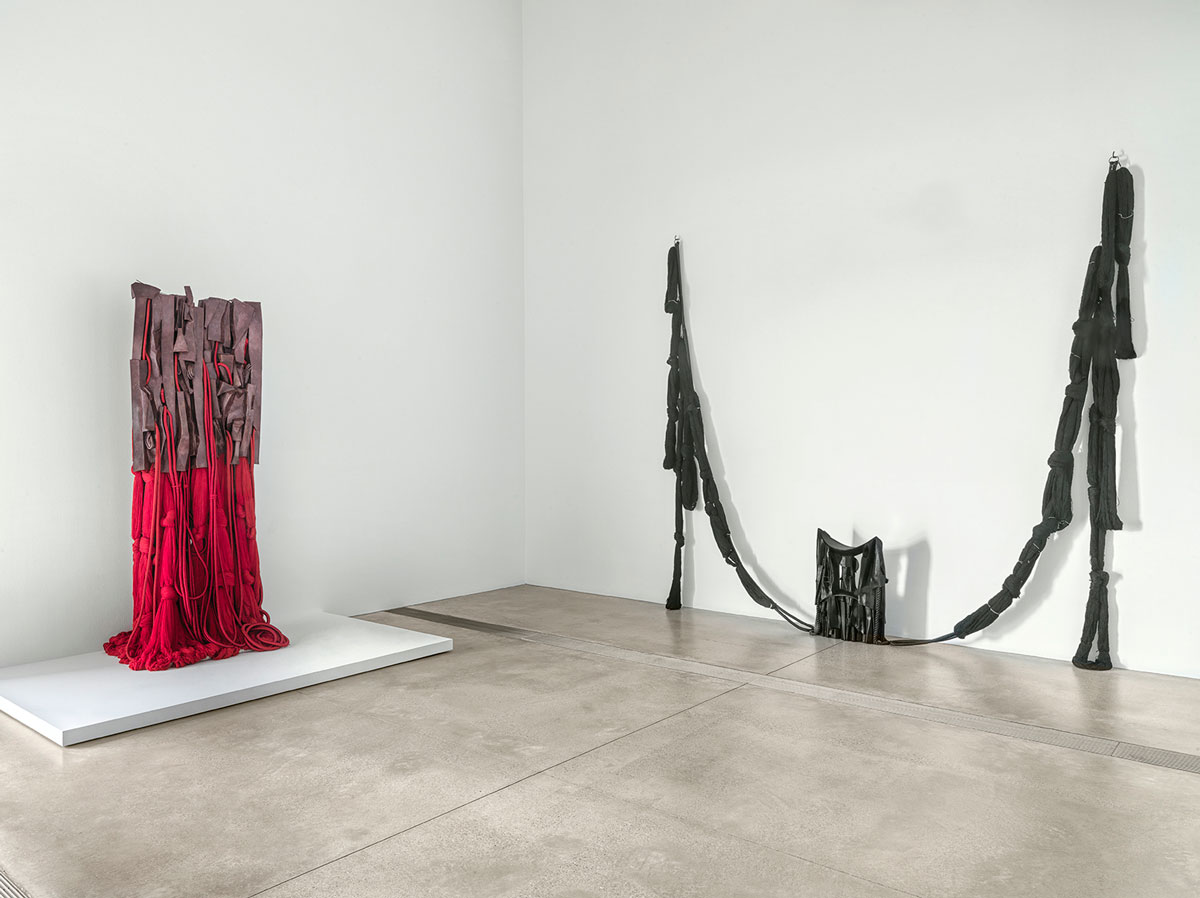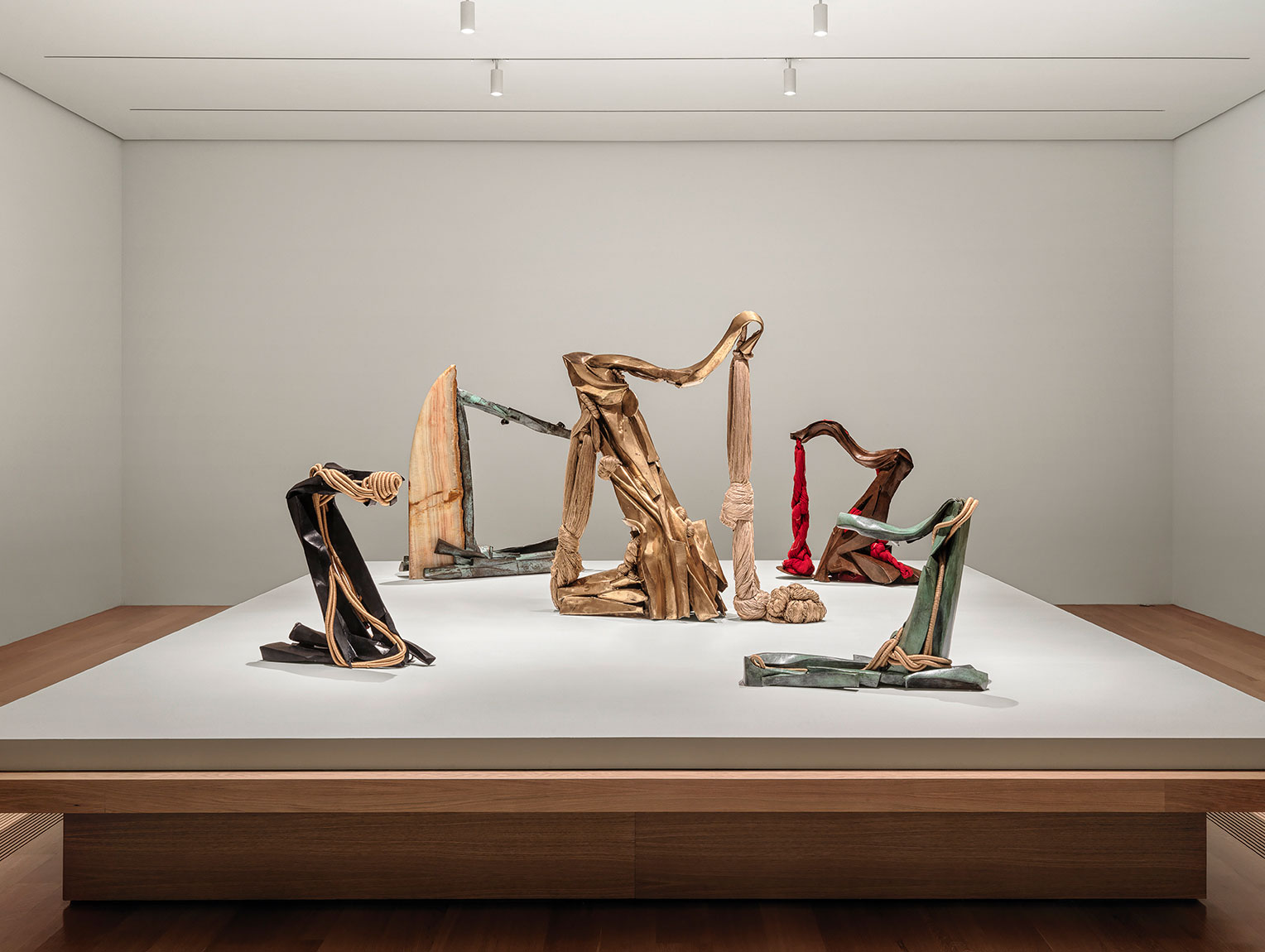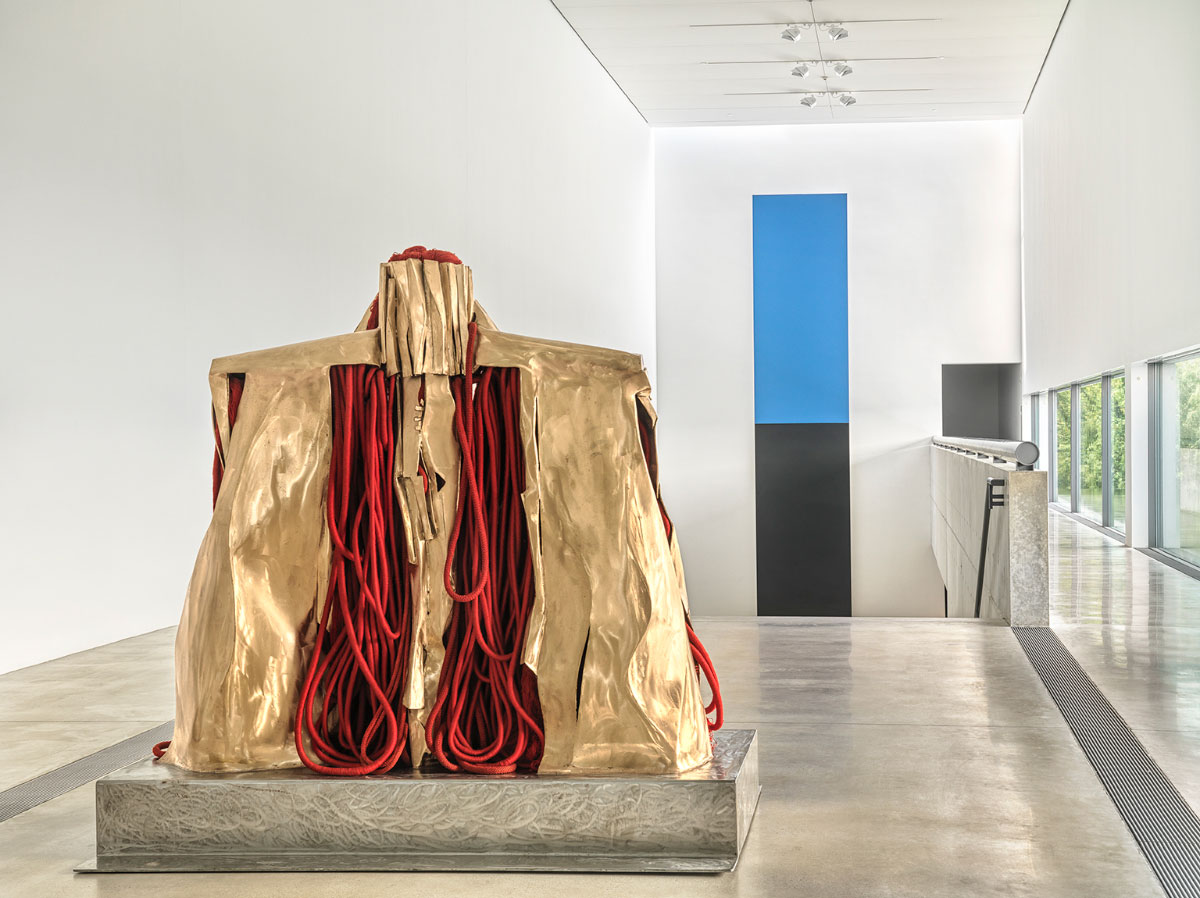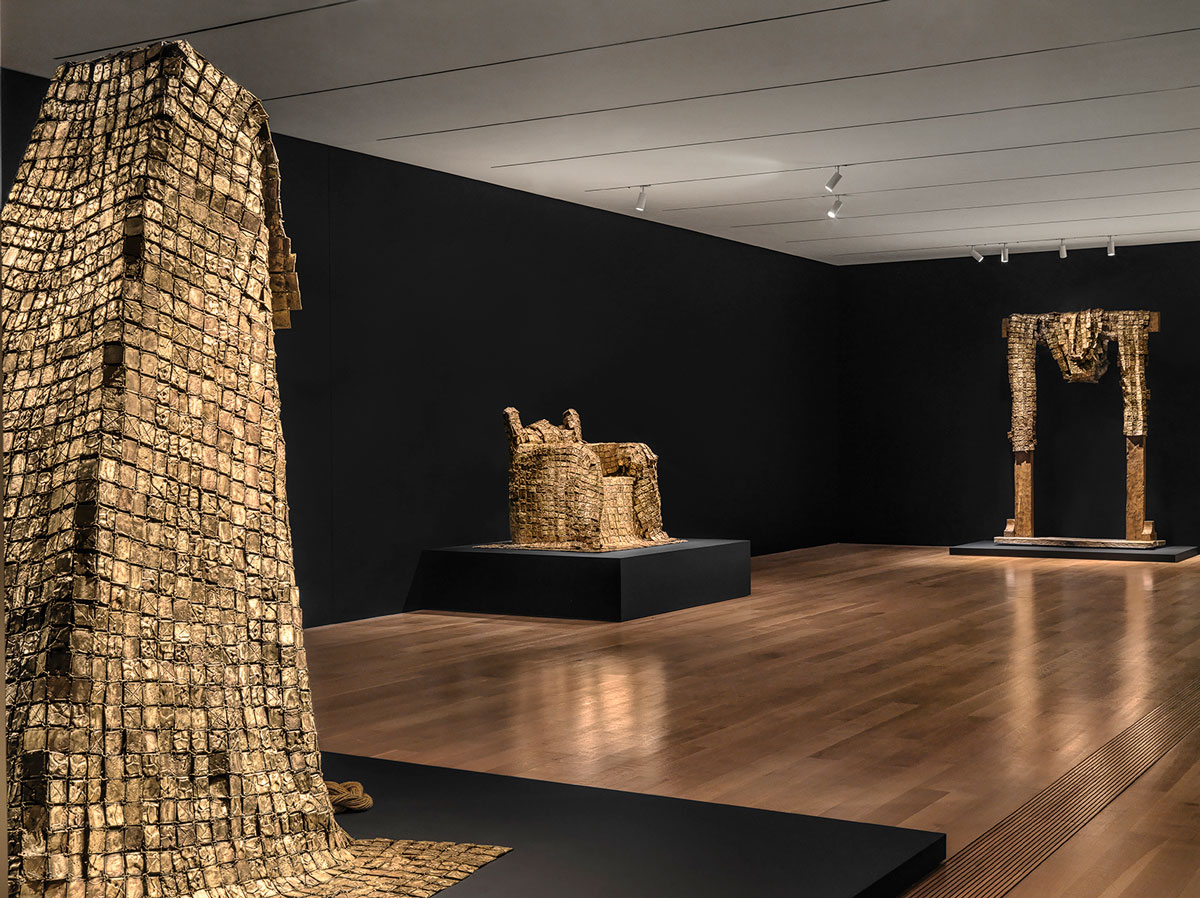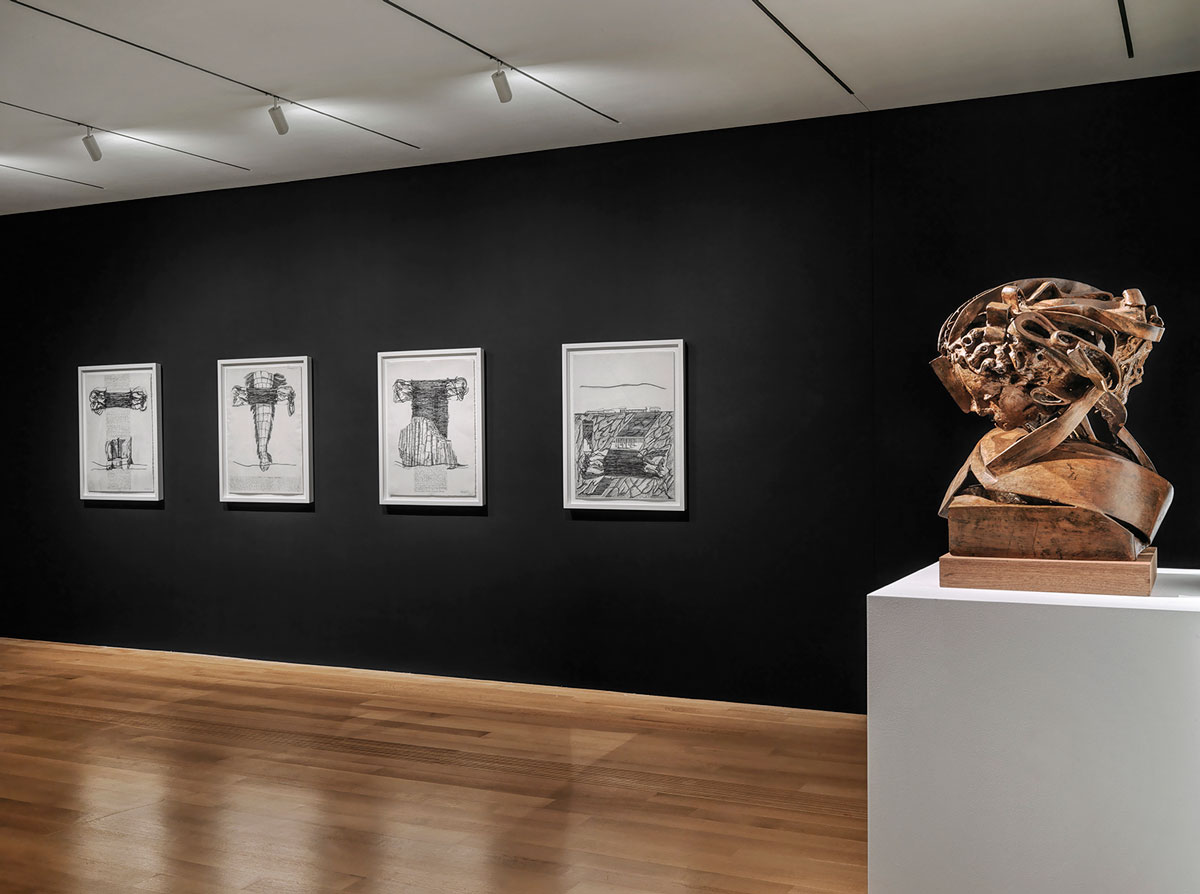PRESENTATION: Barbara Chase-Riboud, Monumentale:The Bronzes
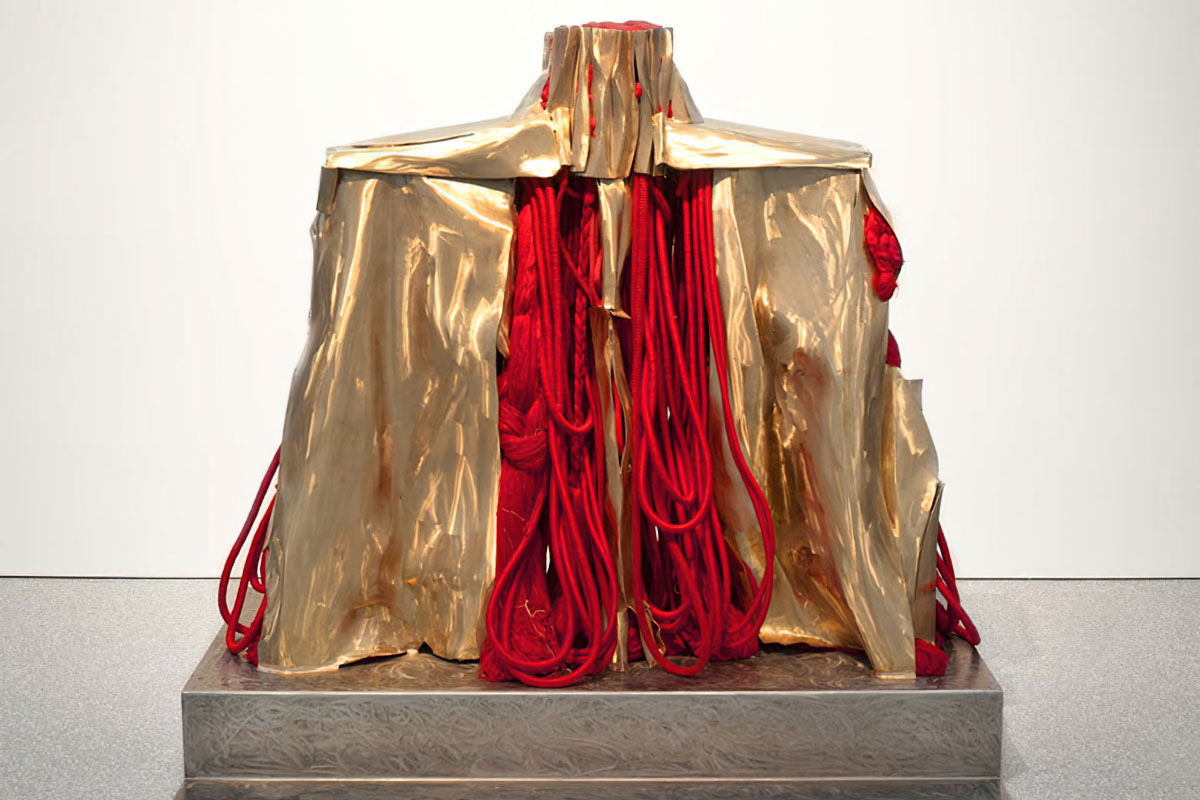 With a career spanning over seven decades, Barbara Chase-Riboud’s innovation in sculptural technique and materiality is characterised by the interplay between folds of cast bronze or aluminium and coils of wool and silk which are knotted, braided, looped, and woven. By combining materials with different qualities such as hard and soft, light against heavy, and tactile versus rigid, Chase-Riboud’s works lend an aesthetic consideration to the sculptural base through the use of fibre ‘skirts,’ speaking to the artist’s interest in crafting forms that unify opposing forces.
With a career spanning over seven decades, Barbara Chase-Riboud’s innovation in sculptural technique and materiality is characterised by the interplay between folds of cast bronze or aluminium and coils of wool and silk which are knotted, braided, looped, and woven. By combining materials with different qualities such as hard and soft, light against heavy, and tactile versus rigid, Chase-Riboud’s works lend an aesthetic consideration to the sculptural base through the use of fibre ‘skirts,’ speaking to the artist’s interest in crafting forms that unify opposing forces.
By Efi Michalarou
Photo: Pulitzer Arts Foundation Archive
The exhibition “Barbara Chase-Riboud Monumentale: The Bronzes” brings together s 40 major sculptures from the 1950s to the present day, accompanied by 20 drawings. The exhibition illustrates how the artist has developed a highly original visual language that is also fundamentally global and transhistorical, with influences ranging from Italian Baroque architecture to West African bronze making. Chase-Riboud has deftly wielded the centuries-old tradition of bronze monument-making. The exhibition begins with an imposing work in the museum’s entrance courtyard: “Standing Black Woman of Venice” (2021). While the towering black bronze figure was created only last year, the mold from which it was cast is one that Chase-Riboud made more than fifty years ago. She completely reconceived its orientation for this new sculpture to achieve a monumentality and austerity that harken back to the standing figures of both ancient Egypt and Alberto Giacometti. Moving on to the entrance gallery, the exhibition unfolds in loosely chronological order, beginning with Chase-Riboud’s earliest large-scale bronze “Adam and Eve” (1958), which she created during a year-long fellowship at the American Academy in Rome. The sculpture approaches abstraction in its depiction of the two Biblical figures huddled together under the sloping tree of knowledge. Like a number of other sculptures the artist created during her early years, the attenuated forms and rough-hewn surfaces here recall the iconic standing figures of Giacometti. Six drawings from a 1966 series, “Le Lit”, are also highlighted here. One depicts a man and woman in bed, their unnaturally elongated limbs taut and extended in opposite directions, the woman defined by a gently sloping belly. As the series progresses, the images become more abstract and eventually dissolve into geometric forms that resemble the rippling, pleated sheets of metal that the artist had already begun producing with sand-cast aluminum. The main gallery features six monumental bronze abstractions drawn from the extensive “Malcolm X” series, where Chase-Riboud memorialized a historic figure for the first time. With the “Malcolm X” series, Chase-Riboud began to synthesize a number of the signatures of her mature style. One of these hallmarks can be seen in the textile ‘skirt’ attached as a base to the bronze ‘body’ of “Malcolm X #13” (2008). The ‘skirt’ would become a fixed form in Chase-Riboud’s bronzes, allowing her to address her longstanding interest in achieving balance and tension by harnessing opposing forces. Stationed nearby, five other major bronzes from the series (Malcolm X #9, #16, #17, #18, and #19) speak to the artist’s evolving methods and her desire to pay tribute to the global Pan-African movement that began in the 1960s. Also in this gallery is the ambitious “La Musica Red Parkway/Josephine” (2007) which pays tribute to Josephine Baker, the American icon who was born and raised in St. Louis but became a French citizen and was buried at the Pantheon in Paris. The red bronze figure with red silk ropes serves as a counterpoint to her “Malcolm X” series with an open form that terminates in coiled curls that resemble treble clefs or violin scrolls. With this work Chase-Riboud uses abstraction to visualize the physical embodiment of the acoustic while also celebrating the impact of Baker’s singular contributions to the twentieth-century musical landscape.
The museum’s cube gallery contains works from the “Zanzibar” series that Chase-Riboud began in the early 70s. As in the “Malcolm X” series, she addresses important historic injustices in the Zanzibar works, this time in reference to the East African archipelago that served as a center of the slave trade from as early as the 17th century. Here, Chase-Riboud advanced a number of the techniques she developed in the Malcolm X series, such as building three-dimensional forms with long thin strips of bronze. The exhibition features Zanzibar Table Gold and Zanzibar Table Black # 2, both 1972 bronzes in which the artist experimented with casting techniques, playing with height, volume, and monumentality, integrating silk, linen, and synthetic cords into bronze by looping and tying processes. Moving to the first lower gallery, four major sculptural works refer obliquely to realities experienced by women. In “Homage to Gustave Courbet” (1967), Chase-Riboud makes reference to the 19th century painter’s infamous “L’Origine du monde:” (1866). Her work takes the form of a large black silk triangle framed by strips of brightly polished, crinkly bronze. The use of the triangle at this early date foreshadows her later interest in the form as symbolic of nature and creation in tantric philosophy. Also in this gallery is “Nursery #3” (2007), a wall piece that rises as solid black bronze, silk, and rope before evaporating into limned blank space. Chase-Riboud had earlier experimented with sand-casting aluminum, and two large-scale sculptures in this gallery show how she advanced the possibilities of the method. In “Well of the Concubine Pearl” (1967), she almost seems to be transforming metal into fiber and fiber into metal: that is, polished aluminum surfaces take on the lightness of fabric, while silk and woolen ropes project the illusion of permanence. Chase-Riboud’s “Cleopatra” series, which occupied her for almost thirty years and culminated in seven major sculptures. Four are on view here in one of the Pulitzer’s lower galleries. Each references a personal effect belonging to the queen of Ptolemaic Egypt: cape, door, chair, and wedding contract. “Cleopatra’s Cape” (1973), inspired by the jade burial suits of the Han Dynasty in China, is made of small plaques of bronze, hand-woven together. To achieve the iridescent quality she wanted, Chase-Riboud had to use a firing technique that produced many unpredictable results. She welcomed this element of chance and upped the ante by employing the Surrealist technique of automatism to create abstract designs that repeat across the cape’s surface. Also in this gallery are four works on paper from the “Monument Drawings” Series, a portfolio of 24 drawings on etchings that Chase-Riboud created in just a few months between 1996 and ‘97. The selection depicts imaginary memorials to Émile Zola (for Paris); Shaka Zulu (for Harare); “Precious Concubine” Pearl (Imperial Noble Consort Keshun) (for Beijing); and Peter Paul Rubens’s mother Maria Pypelinckx (for Antwerp). The artist’s deft draftsmanship can be observed in the careful linework used to balance light and dark, delineate texture, and suggest form. Chase-Riboud’s architectural training is also evident as she describes built environments in multiple styles, with elevations sometimes embedded into larger drawings that integrate perspective, as in Zola’s Monument (1996). The exhibition culminates with works from Chase-Riboud’s largest body of work, “La Musica” (1990-ongoing), the series makes oblique references to the forms of musical instruments and the bodies that play them. Two of the works in this gallery pay tribute to women of great historical significance and personal interest to the artist. Chase-Riboud’s gold bronze and silk sculpture “La Musica Marian Anderson” (2003) acknowledges the contralto Marian Anderson, “Anne d’H” (2008), a vertical gold bronze form bound with curling tendrils of wrapped gold silk, celebrates the late art historian and longtime director of the Philadelphia Art Museum, Anne d’Harnoncourt. Together with “La Musica Red Parkway/Josephine” (2007), installed in the main gallery, these works can be seen as a precis on the language of monumental sculpture developed by Chase-Riboud and employed to honor women who shaped the artistic and musical identities of Philadelphia, her hometown; Paris, her chosen home; and St. Louis, the location of the Pulitzer.
Photo: Barbara Chase-Riboud, Mao’s Organ, 2007, polished bronze and red silk cord, © Michael Rosenfeld Gallery, LLC NY, © Barbara Chase-Riboud, Courtesy the artist and Pulitzer Arts Foundation
Info: Curator Stephanie Weissberg, Pulitzer Arts Foundation, 3716 Washington Boulevard, St. Louis, MO, USA, Duration: 16/9/2022-5/2/2023, Days & Hours: Thu & Sat-Sun 10:00-17:00, Fri 10:00-20:00, https://pulitzerarts.org/

Right: Barbara Chase-Riboud, La Musica Red Parkway, Josephine, 2007, Bronze with red patina and silk, 72 7/8 x 49 x 19 inches (185.1 x 124.5 x 48.3 cm). Private collection, © Barbara Chase-Riboud, Photography by Alise O’Brien Photography, Courtesy the artist and Pulitzer Arts Foundation

Right: Barbara Chase-Riboud, Shaka Zulu Monument, Cape Town, 2007, Charcoal, charcoal pencil, and ink with engraving and aquatint on paper, 31 1/2 × 23 7/8 inches (80 × 60.6 cm), Private Collection, © Barbara Chase-Riboud, Photography by Alise O’Brien Photography, Courtesy the artist and Pulitzer Arts Foundation
